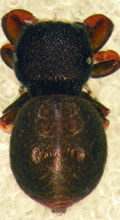Latest News Archive
Please select Category, Year, and then Month to display items
08 February 2019
|
Story Lacea Loader
![]()
The University of the Free State (UFS) offers its deepest condolences to the family and friends of the deceased student who was killed at the Durban University of Technology (DUT) during a protest action on the Steve Biko Campus on 5 February 2019.
The UFS condemns the use of firearms and undue force against protesting students.
The university’s executive management supports the plight of students at institutions of higher education around the country, encouraging the use of engagement and dialogue to resolve issues between students and university leadership at all times. We hope that these issues can be resolved amicably and to the benefit of all higher education institutions, as well as to the benefit of the country.
Released by:Lacea Loader (Director: Communication and Marketing)
Telephone: +27 51 401 2584 | +27 83 645 2454
Email:
news@ufs.ac.za |
loaderl@ufs.ac.zaFax: +27 51 444 6393
UFS entomologists describe a new spider species
2014-02-19
|
 |
It is about 3mm in size and almost looks like a ladybird, but this new spider is the cause of great excitement at the University of the Free State’s (UFS’s) Department of Zoology and Entomology.
The new species of spider, now known as Rhene amanzi, was recently described for the first time and was ‘introduced’ to other arachnologist at the recent congress of the African Arachnology Society at Amanzi Private Reserve.
Dr Charles Haddad, senior lecturer in the UFS’s Department of Zoology and Entomology, said they already stumbled upon the male spider in 2010 when a student was doing research at the reserve. After a very long process, the spider was described and a couple of weeks ago, whilst at the congress, they also found the female.
“Up to now we only know that the spider lives in trees in the Brandfort area. The range could be wider, but since it was only described recently, other arachnologists will only now be able to identify accurately.”
Dr Haddad says they still have to determine how many eggs the female is able to lay, what the spider’s life cycle looks like and what their habitual preferences are.
“What we do know is that it probably isn’t poisonous and that the spider imitates a ladybird in order to protect itself against predators.”